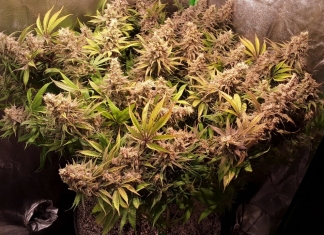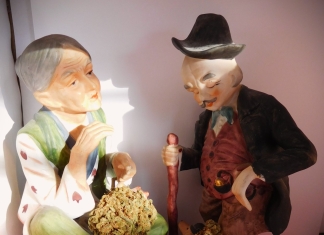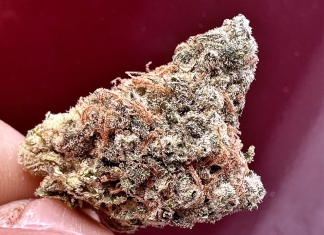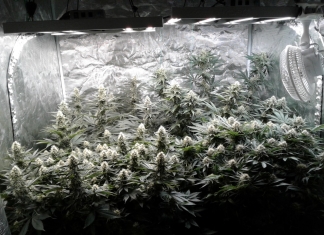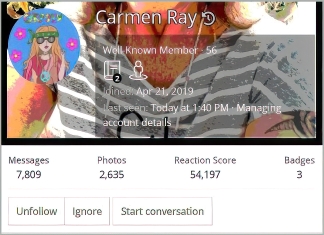Medical marijuana cardholders in Montana have nearly tripled and the number of providers has increased by 17 percent since a 2016 ballot initiative and 2017 state Senate bill loosened restrictions, according to a report filed by a state agency.
But the state totals are not an all-time high, no pun intended, as Montana had 31,522 cardholders in May 2011, prior to legal challenges and legislative action.
And as of Nov. 15, the Department of Revenue has collected $395,251 in first-quarter taxes from 434 providers, which represented about $10 million in gross sales for the three-month period, the report states.
The summary by the Montana Legislative Services Division office of research and policy analysis found that by Dec. 29, 2017, Montana had 22,177 medical marijuana cardholders as compared with 7,785 on Oct. 31, 2016, a 185 percent increase. In 2012 that total was 8,681.
Since Oct. 31, 2016, the number of Cascade County cardholders went from 333 to 912 cardholders and the number of providers went from 9 to 16, the report found.
The study also notes that four doctors had more than 1,000 cardholders each by late 2017; there were five for 501-1,000 and 251-500 cardholders. On the lower end, there were 71 physicians who had one cardholder, 28 each with two or three and 24 with four, according to the report.
The report prompted one lawmaker to say the number was too high for a state with a population of 1 million while a spokeswoman for the cannabis industry said people need to remember the program was shut down for several months and is returning with an improved regulatory infrastructure.
The review comes after voters approved ballot Initiative 182 in November 2016 to expand medical marijuana and reopen pot dispensaries and the Legislature passed Senate Bill 333 in 2017.
Montana voters legalized medical marijuana in 2004. A 2011 state law restricted marijuana providers to a maximum of three patients. It was upheld by the state Supreme Court and took effect in August 2016.
The report notes that I-182 and SB 333 removed the three-person limit on the number of patients per provider, added post-traumatic stress disorder to the list of conditions for medical marijuana, allowed licensing and testing laboratories and dispensaries and chemical manufacturing endorsements.
SB 333 fleshed out some of the regulatory aspects, according to the report. The bill set a 4 percent tax for the fiscal year on gross sales of marijuana and marijuana-infused products sold by licensed providers. Next fiscal year the tax will be 2 percent.
The report, based on figures from the Department of Public Health and Human Services, is part of the Jan. 18-19 Children, Families, Health and Human Services Committee meeting. The panel has oversight of the Montana Medical Marijuana Act and monitors implementation of the law. No action is listed on the agenda.
I-182 set annual licensing fees for providers of $1,000 for 10 or fewer patients, $5,000 for those with more than 10 and $1,200 for testing laboratories, the memo stated.
SB 333 called on the Department of Public Health and Human Services to set fees for dispensary licenses and chemical manufacturing endorsements.
DPHHS has not collected licensing fees because it is not licensing providers until it adopts rules. But it is registering providers under a law before the I-182 passed and is charging a $50 annual registration fee.
The department proposed a fee of $2,000 for a testing laboratory license; $500 for a dispensary license and also for a chemical manufacturing endorsement and $50 per employee for an employee permit.
Cardholder fees would also increase from $5 to $30 a year.
According to the report, DPHHS estimates the fees will raise about $2.2 million more than the current fees generate.
Nearly 100 people attended a DPHHS hearing on the proposed fees in November to fully implement I-182 and SB 333. The report states that there were oft-repeated concerns that included prohibiting anyone with a drug offense from working for a provider or lab, a requirement to pay for a permit for each employee a licensee hires, the number of required lab tests and their costs and costs to comply to the rules.
Jon Ebelt, DPHHS spokesman, said the rules are expected to be filed this month.
Sen. Cary Smith, R-Billings, who opposed I-182 and SB 333, said the numbers were too high for a state with a population of 1 million.
“We can’t have that many people having a need for medical marijuana,” he said.
He noted there were a large number of recommendations by very few doctors. Smith also wondered how a doctor could effectively prescribe and monitor marijuana for 1,000 patients.
“There is a preponderance of cards being issued by a few doctors,” he said. “That is a troubling statistic to me.”
He said he could see the Legislature looking at the issue again.
“It’s like all the other substance abuse issues we have, we have to revisit them all the time,” Smith said, noting lawmakers looking at prescription drug and alcohol abuse. “It’s another one added to the mix.”
Katie Cholewa of the Montana Cannabis Industry Association said the growth mostly has to do with the fact the program was “practically shut down” for three months.
She said nationally 90 percent of U.S. residents are OK with medical marijuana.
Cholewa said she believed the number would continue to climb as one family sees another family get relief from medical marijuana.
She said I-182 has not been fully implemented as some of the protections have not been put into place.
Cholewa also said she expected the Legislature to look at it again.
“The law will continue to be tweaked over many sessions,” she said.






